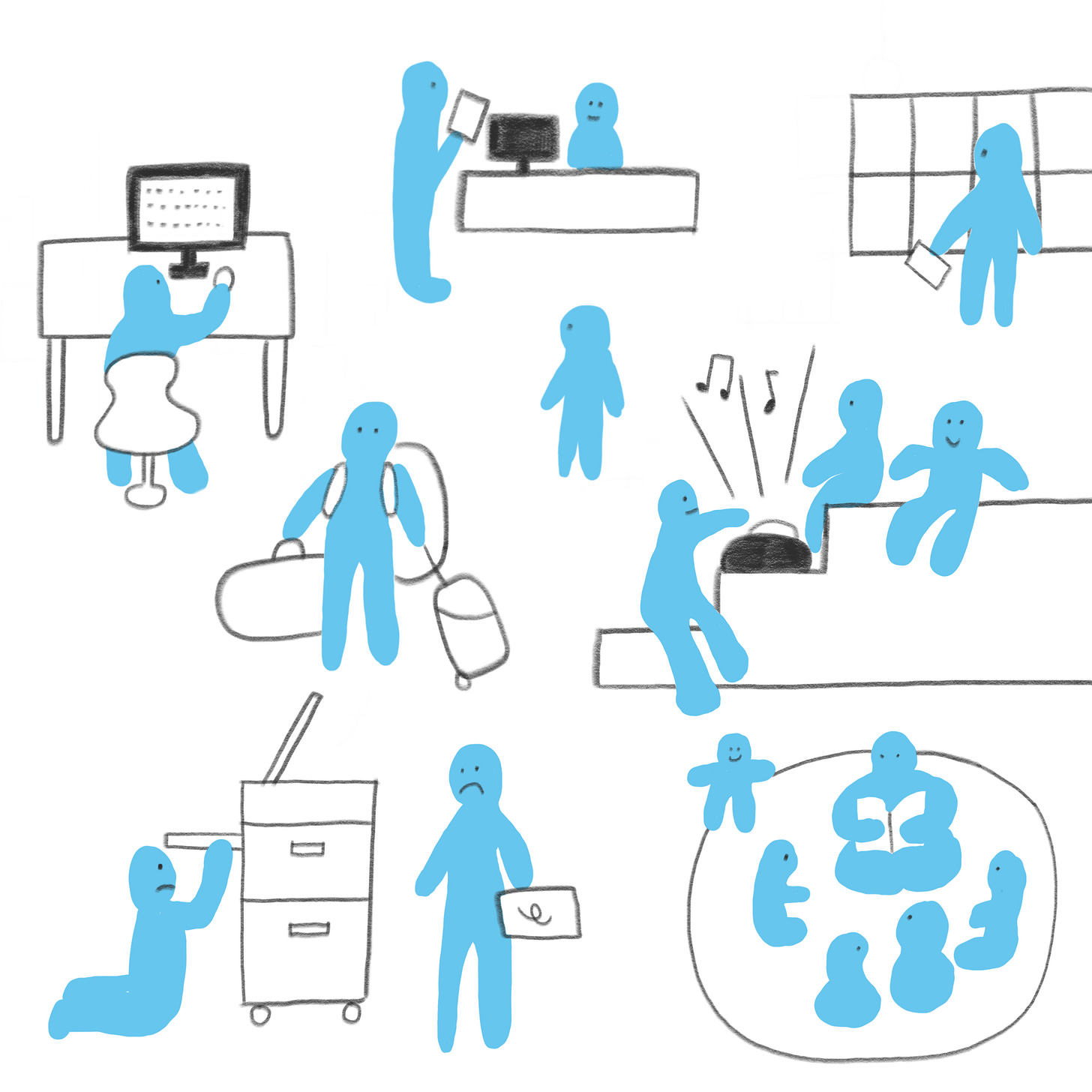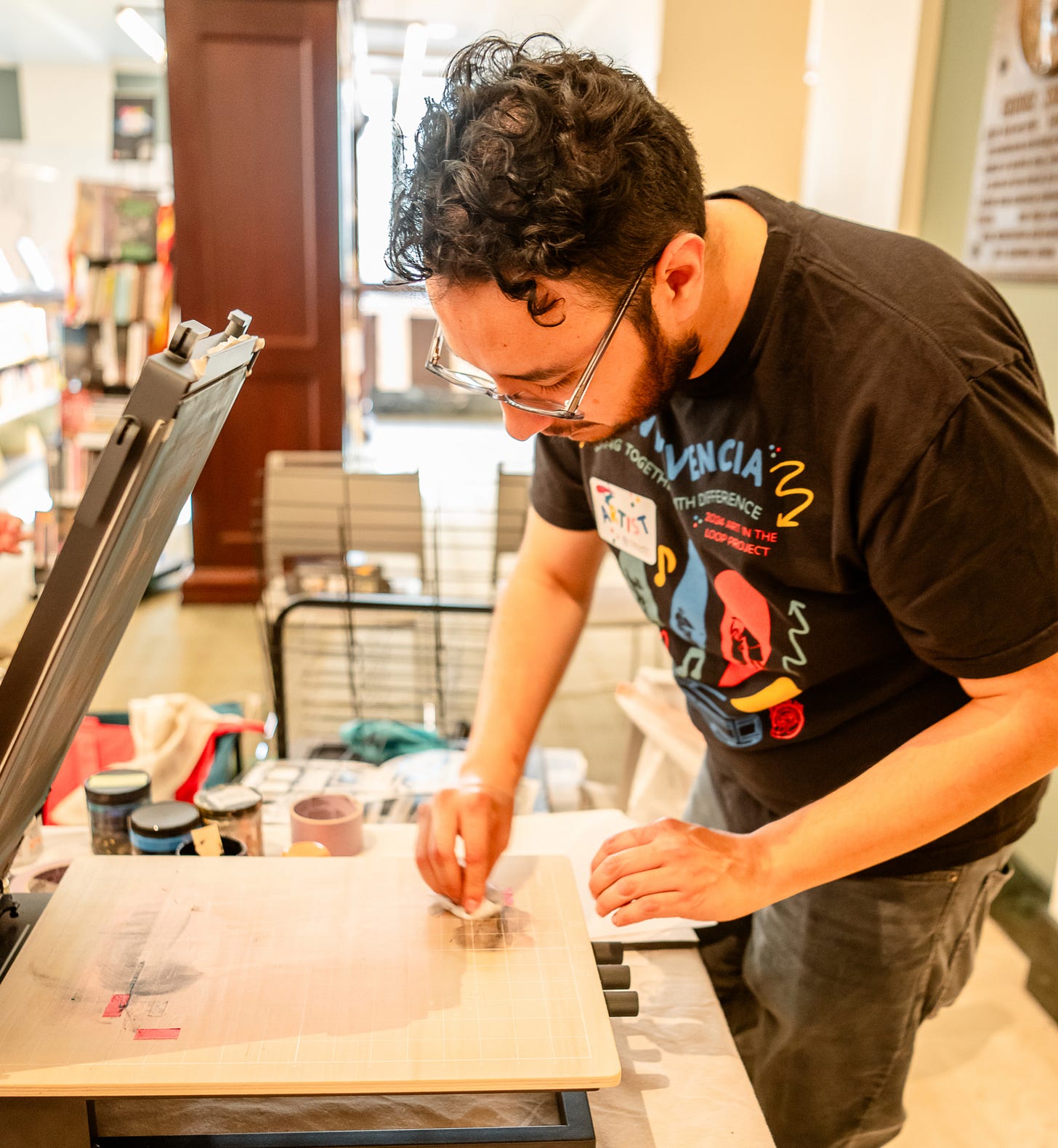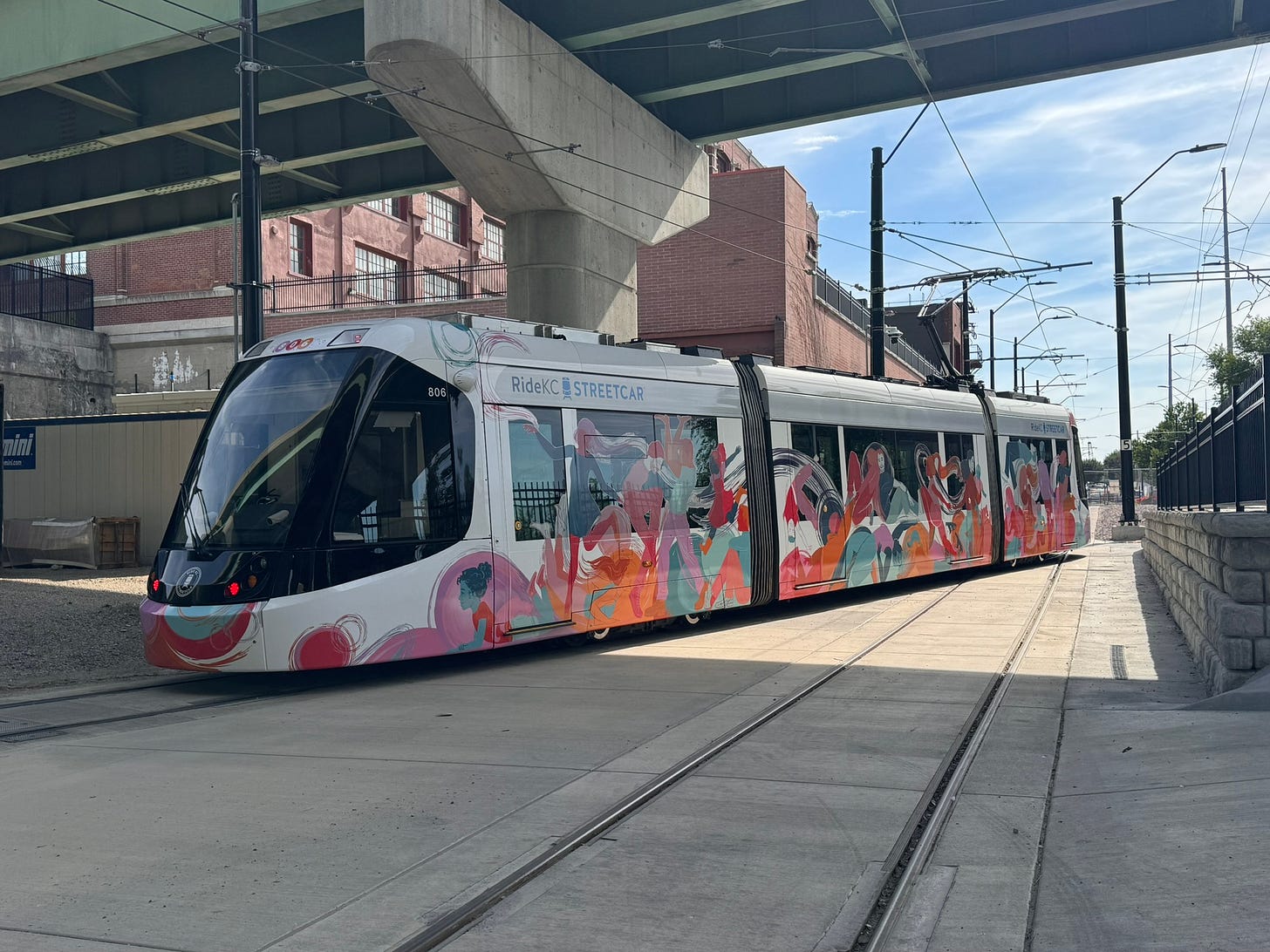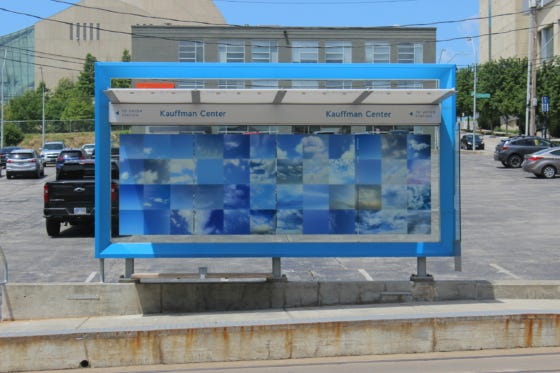Images of Convivencia
The theme of Kansas City's public art summer this year is convivencia, inspired by my talk last year. Director Ann Holliday and artist Edwing Mendez share how convivencia came to life.
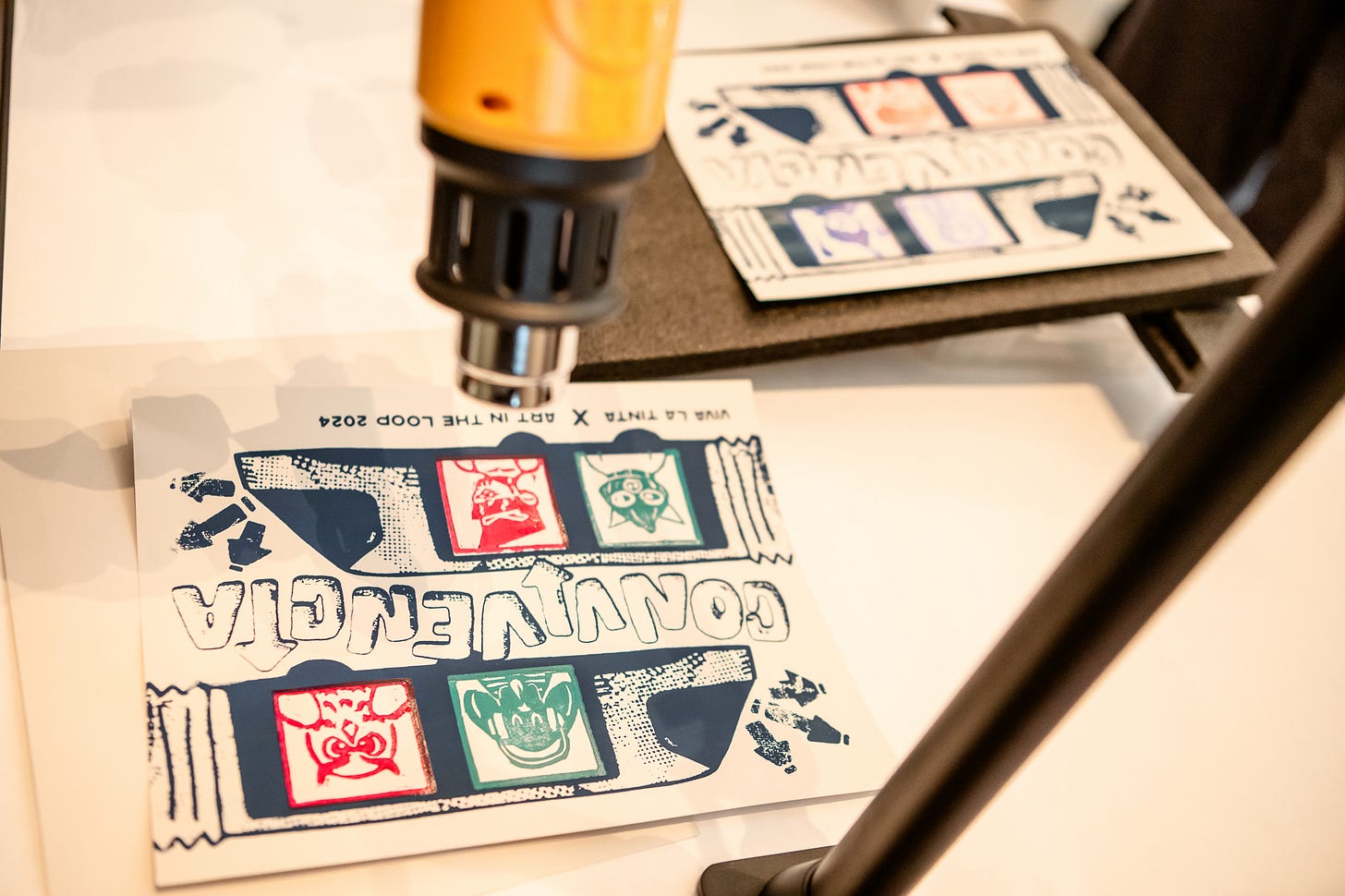
When I started working on the idea of convivencia in 2022, I very quickly realized that I needed to find ways to visualize what I was talking about. As a former public servant, I recognize the risk of coming across as, in the words of Swedish author Lena Andersson, one of the people of abstract altitudes.
I felt fortunate that Nene Tsuboi, a Japanese artist based in Helsinki, was willing to engage with me and think about ways to illustrate convivencia. Nene drew these blue blob characters engaging in libraries and parks. Our design principle was when the characters in the images not too human-like, we could direct the attention more to what they are doing rather than who they are.
Nene’s illustrations have worked well. They have an element of humor. The sketch-like style provides room for interpretation.
Convivencia in KC
Over the last few years, I have gives over 40 talks on convivencia as the capability to coexist. On 5 December 2023, I had the opportunity to speak at the opening event of Kansas City Public Library's 150th anniversary. I was humbled to be part of the same roster of talks with Margaret Atwood and Ari Shapiro. My visit was the kick-off for the year and included a stakeholder luncheon and a public evening talk. As a major surprise, the library had a commissioned a poem on convivencia from Glenn North, which you can listen to in thie video recording.
Two months later, as I was concluding my fellowship at Johns Hopkins University, I got a message from Courtney Christensen at Kansas City Public Library who had been my gracious host. She told me that She told me that Art in the Loop, an organization affiliated with the Downtown Council in Kansas City, had been so inspired by the talk that they had decided to choose convivencia as the theme for , their summer-long downtown public art program. Their goal was to commission new artwork from local artists on convivencia.
A couple of weeks ago, my Google alert on convivencia picked up a news item from a KSHB 41, a Kansas City TV station. In the news clip, Ann Holliday, the Downtown Council Vice President and Art in the Loop’s Director talked about their approach.
In the clip, Ann talks about convivencia as living together in a space between harmony and conflict. This description is directly from my research. This is the best possible outcome of my research: people in cities turning it into practical action.
I was glad that Ann and one of the artists, Edwing Mendez from the Viva La Tinta collective were kind enough to talk to me about how convivencia came to life in Kansas City.
Art in the Loop allows people to go outside their comfort zone and think about the world in a different way.
Why did you choose convivencia as your theme?
Ann: For the past decade we've picked a theme for Art in the Loop based on what's going on in Kansas City. Last year’s theme was celebrate. We had years where we had resilience or we had play. The theme is selected to curate the artwork. This year, Donna Mandelbaum, Director of Marketing & Communications for KC Streetcar, and I were at the kick-off event for the library's 150th anniversary because we partner with the library all the time. We're strong supporters of what they do. And, gosh, Tommi, when we saw your presentation, we both looked at each other. We were like, we don't know exactly what this word means yet, but we like it. We didn’t know how to pronounce it very well. But when you explained convivencia, we were just like: yes, this.
We use a tagline of living together with difference to just try to really help people interpret what that means. We want to be in that space between total harmony and complete conflict. We all live our lives somewhere in those spaces. We want to be engaging with other people, even though it can sometimes be a little scary, frankly.
We knew that the artists in Kansas City would really vibe with that and they could produce works or create moments and social engagement that could allow people to maybe go outside their comfort zone or think about the world around them in a different way. I think it is a great thing that art can do that.
Edwing, you are one of the artists. What does convivencia mean to you?
Edwing: What's interesting is that I am Latino. I grew up in Miami, my parents are from Mexico. I had never heard that word. It's not something that is in the everyday vocabulary of what I would say is like working-class Hispanic-American families. My creative partner, Erick, he is also Mexican-American, and he had never heard that word before.
We looked it up and the closest translation was coexist. But of course, like you know, once you open a door with translation from English to Spanish, there’s this gap where you realize that not every word has a direct translation in English. There's usually a little bit more meat in some meaning of a word that's being translated. It’s losing meaning.
We tried looking more into it and understood that this means more than coexist. This is a much broader point of view around being able to work together and how all of us with differences can really come together. So we just leaned into that. But at the same time we wanted to be playful.
Could you talk a bit about your work?
Edwing: We had this idea of what if we found a way to make a streetcar graphic that we could mix and match different parts of it. Maybe it's the passengers. Maybe it's different trains. We ended up with this idea of how do we make different passengers on these and really play into that and give the audience the opportunity to choose their own passengers, choose their own community. That they get to build it.
Printmaking is a democratic medium. We did the engagement in the library in the middle of a city thanks to a mode of transportation that is free. We couldn't find a better way of showing our goal of making printmaking accessible.
We asked a lot of our friends to draw a character and then we put them on a block. We had a total of six different artists that participated and made a couple of different versions of of their characters.
We gave them a brief of just putting passengers on the streetcar. We wanted folks of different kinds of backgrounds. Folks that look different. Almost half of our actual characters came out to be more like animal characters. We had an owl that was in there. Someone made a dog, which turned out to be the most favorite one, even though I guess technically there's some rules on whether there can be a dog in a streetcar.
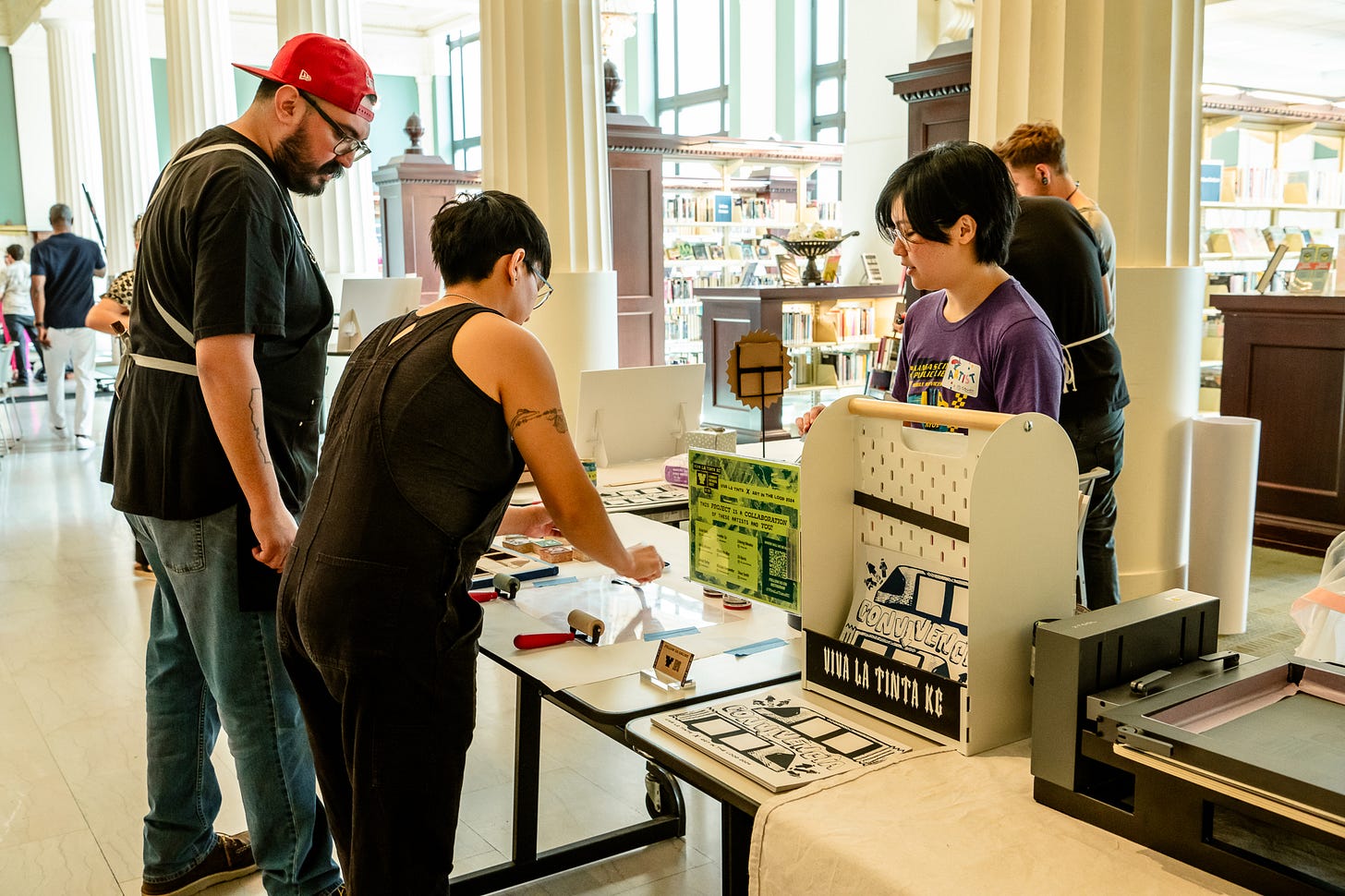
We wanted to make it playful and participatory. We got to this point where people were choosing their blocks and someone was like:“Oh, I want the dog!” But there was only one dog and people were like:”oh, I'll wait”. They were more than happy to be patient and wait to make the print just because they wanted to build something with that same character.
The result is a flat piece of art that you get to take with you. But you also personalize it, you choose your own characters, you do some color iterations. We tried to keep it very intuitive, less of a workshop and more of a demo. Something people would approach almost like a quick food takeout system: you come in line, here’s your menu of options, we'll get you through the line, you choose your ink, you roll it on, you hit, you go through the press, we dry it up, and you're ready to go.
We tried to streamline it. We try to think like urban designers. That's also part of creativity. We wanted to maximize that as many people as possible can get to this. I think we got a total of 67 prints in the couple of hours that we were there.
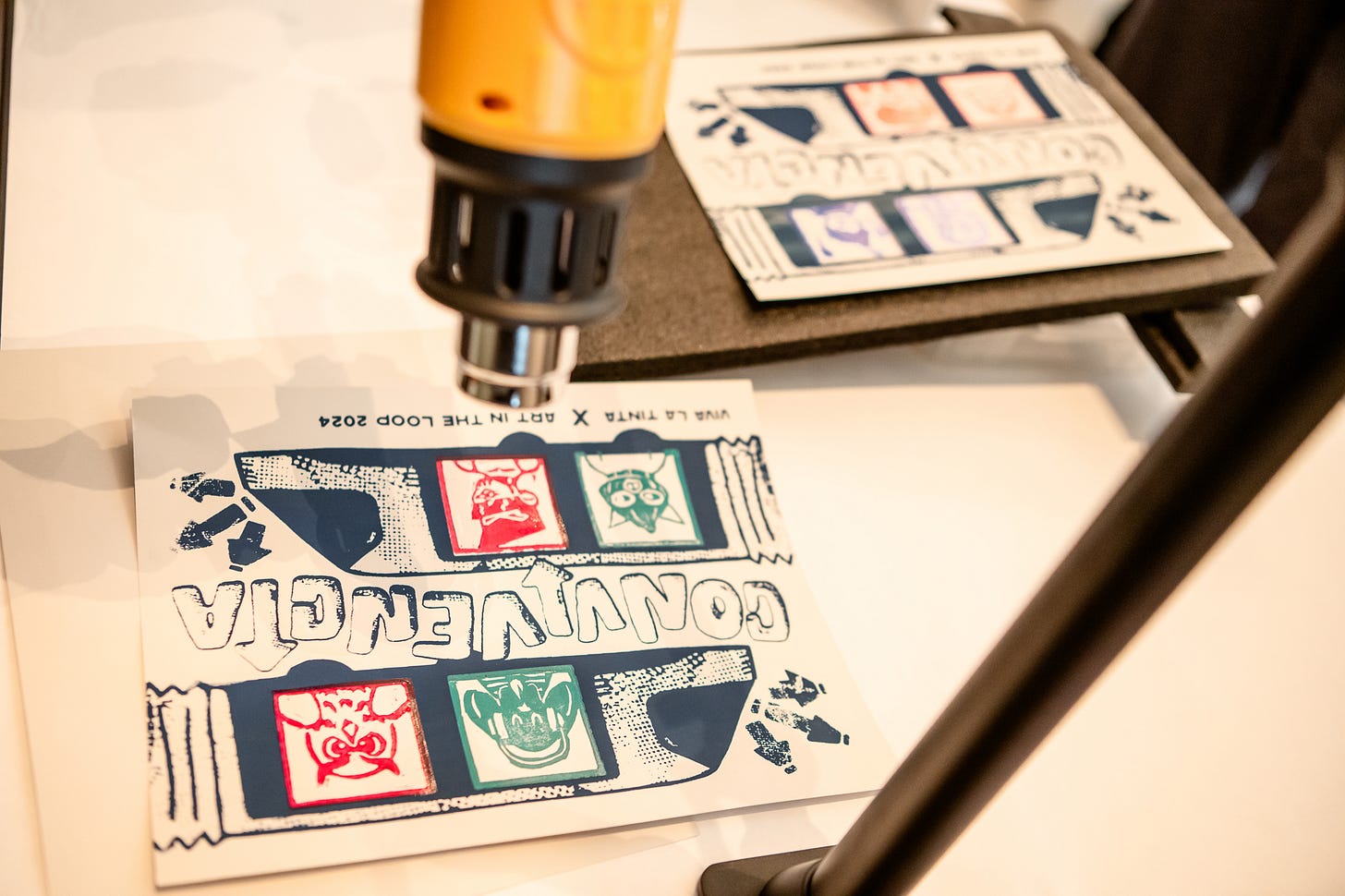
That is amazing. Thanks for sharing. To give us a bit more perspective, could you talk about the other commissions?
Ann: This year, we commissioned over twenty installations and performances. As an example, we were thrilled that Edwing orchestrated this as part of our kickoff event. In this spirit of convivencia, we changed up the way we did our kickoff. Instead of me standing up there and telling people the mission of Art in the Loop and asking for money, I talked for not even five minutes. We had Viva La Tinta doing prints, we had music, we had prints of the other works. The artists stood around with their friends and mingled. We wanted all these things happening at the same time. And we wanted people to have to deal with it and make choices. Like do I want to hang out by the music or do I want to go do this activity? It turned out great.
Another example is Julia Morris who wrapped the streetcar. She was inspired to create these people dancing and doing different activities. She was purposely positioning different types of moods and energy next to each other.
We have the Newlin sisters who did eyeglasses that are KC, short for Kansas City, and people can look through the eyeglasses at each other while they're standing in the streetcar.
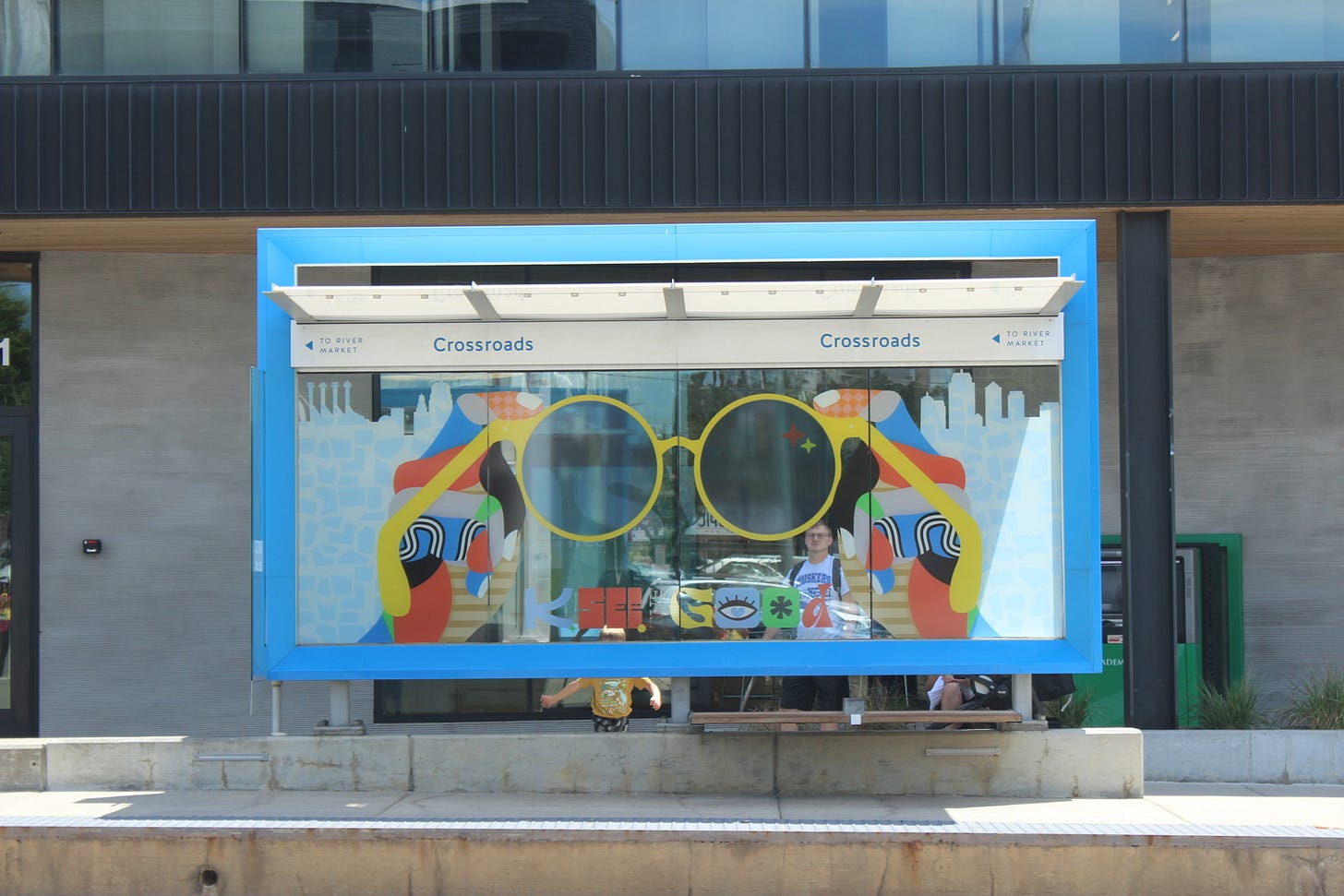
Edwing: I really appreciate Zach and Nasir’s piece. It’s a wrap on one of the stops. It teeters on that line between journalism and and art. It is a revival or documentation of this LGBTQ bar, Soakie’s, that used to be downtown. Soakie’s was only a couple stops away from where the current existing streetcar stop is. Soakie’s no longer exists but it was really important to the local LGBTQ community. Many of the regulars are older and have lost their local spaces. At least there is still that memory of what used to be there and how much it meant to people and the folks that got to be there.
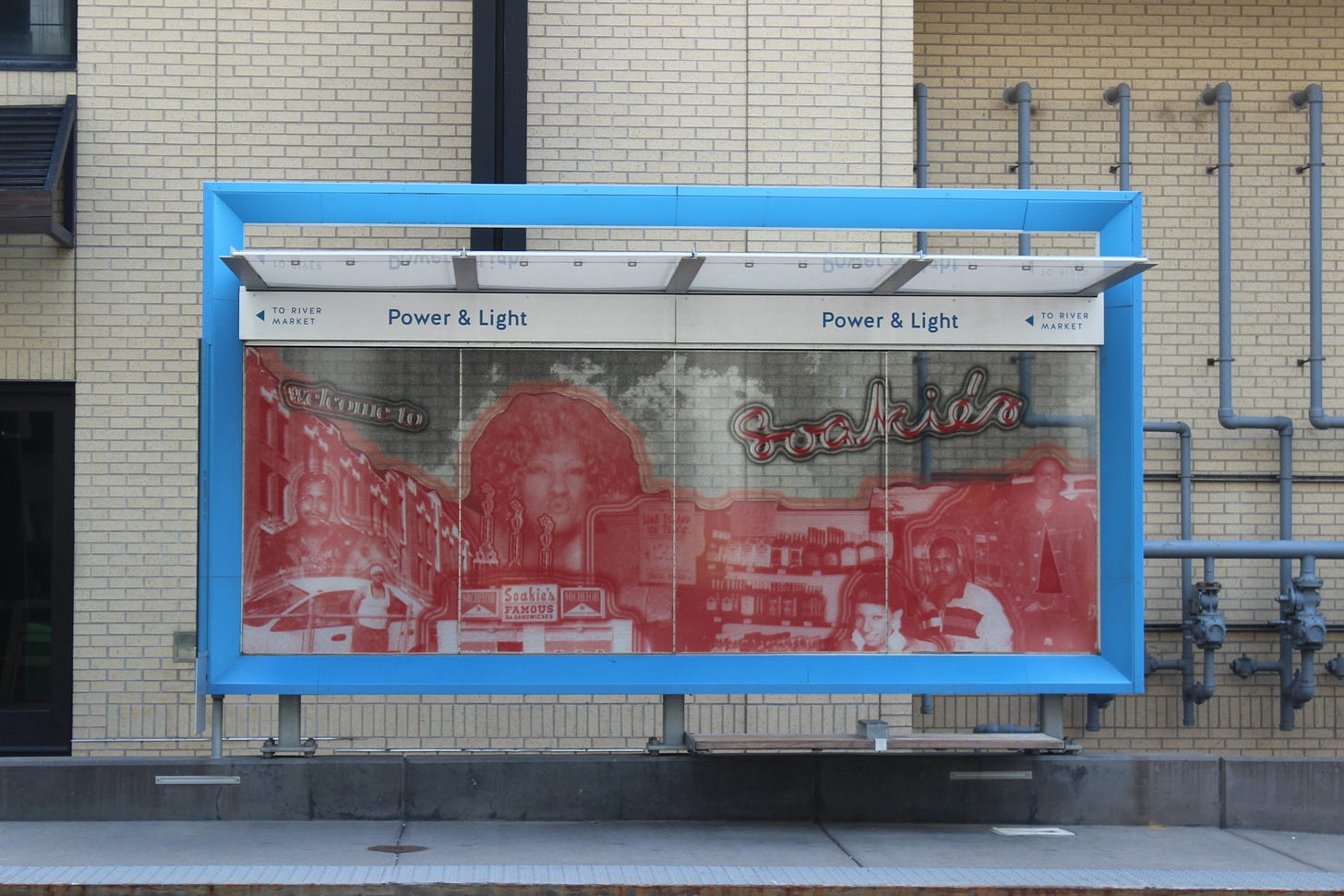
The themes that you are raising are the same things that come up in the research: making certain members of the community or certain practices visible that are not part of the mainstream. The issue of accommodation, that you have to accommodate other ways of being and also other moods.
How long will this run?
Ann: Our closing reception will be, get this, the day after the general election. Between November and the end of the year the artwork will come down. And we'll issue our call for artists in January.
We've used our time but just wanted to check if there is something you would wish to add.
Edwing: I think as a city we are relatively small. I really appreciate that our city shares the streetcar and its stops as a platform for the artists. The streetcar is about to be extended to be almost three times the length that is now. And Art in the Loop keeps going wherever the streetcar goes. I'm really excited about that. We have an arts district that people know and recognize. But what the streetcar is doing is really expanding, making sure that we are known as an art city, not just an arts district.
Ann: We were doing these temporary art installations maybe three years before the streetcar opened. When we talked to KC Streetcar, they jumped on board the first year they opened. We want to connect people through art and they they want to connect people with places so our missions overlapped. It's been a great partnership.
In conclusion
I find this story of Kansas City so inspiring. The big takeaways from it are:
There is no greater tool for communicating values than public art.
Public authorities have power and should use their power on how public spaces are used as a platform for the arts.
The biggest investments in the arts are not done by growing the cultural budget but incorporating the arts into public infrastructure.
Even when working on serious subjects, like downturn revitalization, do not forget play and wonder.
That’s it for this time. Next time, I will be sharing some of the first findings from my work with Edmonton Public Library on how convivencia can act as guiding principle for libraries. Until then, take care.
Tommi
(See all the artworks on the Art in the Loop website.)





